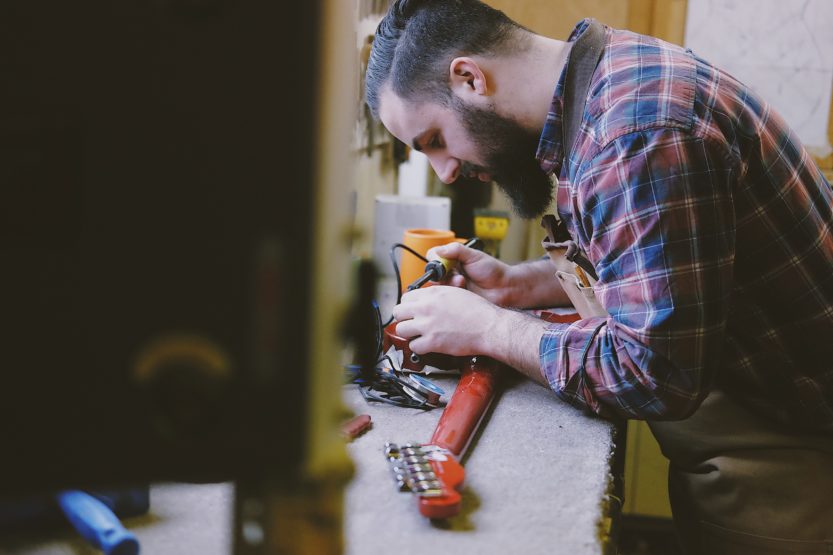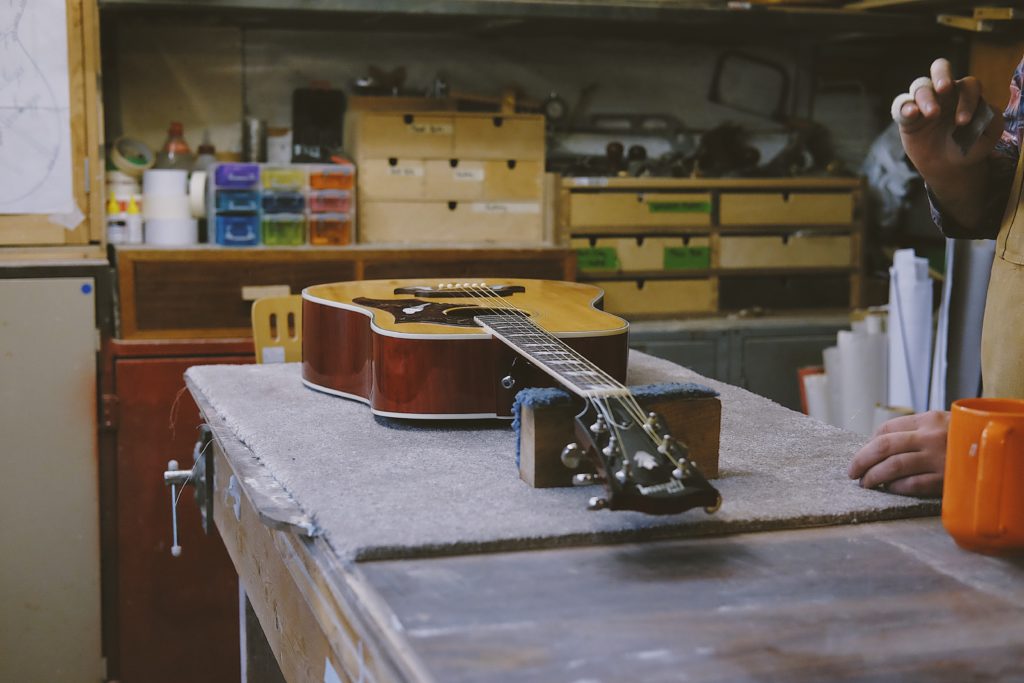
So you’ve been splashing the cash at the local music store and want to know how to set up a new guitar? Well, you’ve come to the right place.
We’re about to walk you through how to get ready to rock in seven simple steps.
Ready?
1. Get the Right Tools
You’ll need some basic tools to set your new guitar up. You may have to fiddle with the truss rod, bridge, nuts, pickup, and strings, so make sure your toolkit is in order.
Here’s what you need:
- Allen wrench (or socket wrench)
- Capo
- Nut files
- Ruler
- Screwdriver (or spanner wrench)
- Tuner (like the Roadie 2)
- Wire cutters
2. Adjust the Truss Rod
Do the tap test by pressing the strings towards the fretboard one by one to gauge how much space there is in between them. If there’s too much or too little relief, then you need to adjust the truss rod. Use the Allen or socket wrench to tighten or loosen the truss rod accordingly.
3. Adjust the Bridge Height
Another way to adjust the action of the strings is to manipulate the bridge. Once you’ve adjusted the truss rod, you can raise or lower the vertical screw(s) on the bridge to change the string height. Use the screwdriver for the screw(s) and the ruler to measure the string height.

4. Adjust the Nut Height
Although most guitar nuts are properly manufactured, one or two of them can sometimes be slightly off. Play each string both open and at the first fret to see if any of them are buzzing. If they do, then you need to shim the nut up and deepen the other nuts. Use the nut files for that.
5. Check the Strings
Your new guitar probably came with new strings, which is nice. But new strings need to be “broken in” so to speak. They’ll also expand and contract depending on the temperature inside and outside. Tighten or loosen them accordingly and use the wire cutters to trim off the excess.
6. Adjust the Pickup Height
You can compress the signal and boost the mid-range by adjusting the pickup height on an electric guitar if you have a soft touch. But if you go full ham, then it’s a good idea to lower the pickups instead. Use the screwdriver to adjust the pickups to suit your style of playing.
7. Set the Intonation
Okay, we’re almost there. The last thing on our to-do list is to check the intonation. For that purpose, you’ll need a tuner. Bonus points if you already have a Roadie 2 because that’ll cut your tuning time down to seconds. Otherwise, play each string and tune according to a reference source.
Ready to Play?
Congratulations! You’ve now set up your new guitar and are ready to bust out some tunes. Now it’s time for you to find your unique sound and go out to jam with some other musicians.


